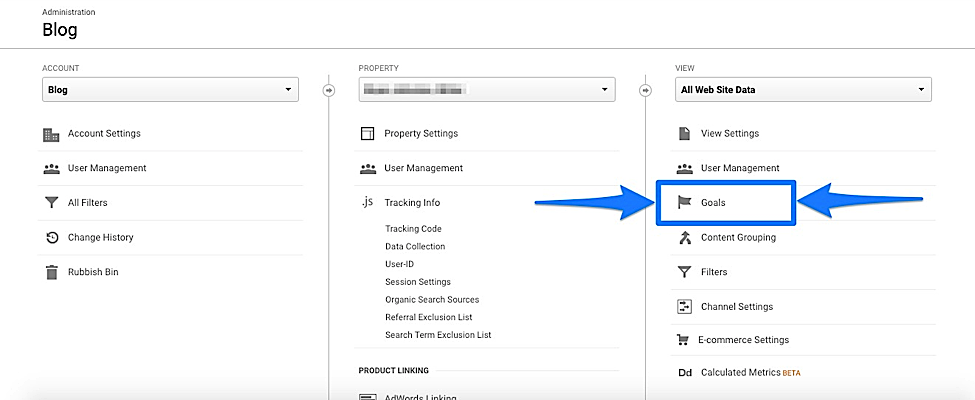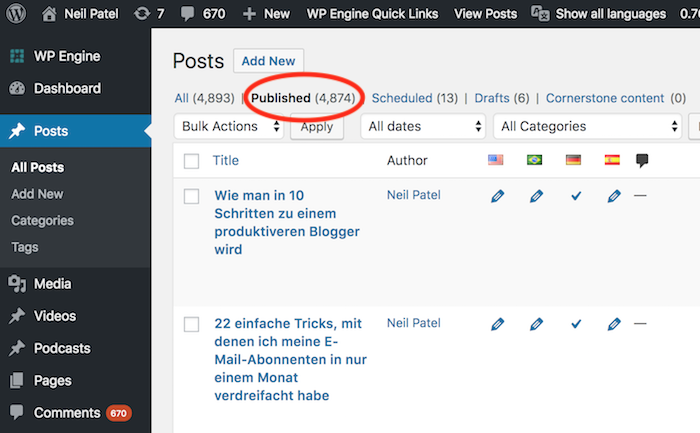It’s no secret that posting quality content regularly is one of the best ways to generate leads. But what does “regular base” really mean?
For some businesses, scheduling one blog post per month meets these criteria, while others produce multiple posts every day. Most are somewhere in between, posting weekly, a few times a week or, if they’re really ambitious, daily.
So what is the right frequency for your business? The answer is … there is no answer. Sorry to disappoint you, but the release schedule that is right for you may be totally different than what works for another brand.
Determining the right volume of blogging for your business comes down to a number of different factors, including your goals, resources, and specific content promotion plans. However, the good news is that after taking each of these factors into account, it will be much easier for you to create a solid content marketing strategy that meets your needs.
You may decide to publish three blog posts each week, but you really don’t have an effective content marketing strategy if you don’t know why that schedule makes sense.
Whether you’re looking for more traffic, growth on social media, Google rankings for specific keywords, or quality leads, you need to clearly define not only what you want your content to achieve, but also what your metrics are for success.
Let’s say your goal is to double the number of monthly unique visitors in three months, and let’s assume that most of your website traffic comes from ten existing blog posts.

To double your traffic, you will need ten most popular blog posts. But since every blog post is unlikely to be a hit, you may want to produce 15 or 20. And to give yourself plenty of time to rank and create a proper promotion on your schedule, you’ll want to launch them in month 1. Is it feasible? ? If not, check your goal to find one that is.
At the moment, my funnywill goal is to improve our ranking for specific keywords and double our unique visits. To achieve this, we are creating as much content as possible around the keywords that we define as important to our business.
Once we hit these metrics, we will change our strategy to support new goals, likely reducing our posting frequency to support longer and deeper blog posts.
Consider Your Resources
How much can you realistically blog? Answering that question is important. You may want to post new content every day, but if you only have the time, resources, and budget to create one post per week or every other week, it’s much better to keep that frequency.
We don’t have time to write and produce a lot in-house, so we do what we can (which usually ends up being about three posts a week) and supplement our blog with guest posts. It’s a lot of content, but it’s doable for us. Your potential outcome may look very different, and that’s okay.
It’s important to remember that just because you put a lot of resources into creating content now, it doesn’t mean you’ll have to do it forever. Content creation pays for itself over time.
Perform a Content Audit
How much content do you have, and more importantly, how good is it? If you already have a large, high-traffic repository of blog posts, you probably don’t need to post something new every day.
HubSpot studied the impact of total blog posts on inbound traffic and found that there was a tipping point of around 400 posts. In fact, companies that published more than 401 blog posts in total got roughly twice the traffic of companies that published between 301 and 400 blog posts.
It may take a while to reach 401 blog posts, but it may not be necessary either. Think Brian Dean from Backlinko. He has less than 75 blog posts, but they drive a lot of search traffic. Why? Because it always keeps posts up-to-date with relevant information, and Google doesn’t just rank content for news, updating is an important factor too.
Updating your published posts is just as important as creating new ones. If you have an old blog post that is still a lead generator for you, make sure none of the links or information is out of date. Add new sections to make it more complete. If you have three short articles on the same topic, combine them to create a comprehensive guide on the topic. You don’t have to start from scratch.
Contrary to popular belief, there is a lot of content. Neil Patel has a blog post called Less Is More: Why I Wish I Never Wrote 4,784 Blog Posts reflecting on how most of the content you wrote and acquired did not significantly increase your traffic and how you regretted not being more strategic with blogs:

If you don’t have content, or if what you do have does nothing for you in terms of traffic, you can consider growing your blog until you start to see results.
Tailor Content to Your Audience & Platform
Your main source of traffic will help determine how much you should post, as well as what type of content you should focus on.
Social Media: If you are promoting your posts on social media and this is generating traffic and leads for you, it may be worth trying to create the shorter types of content that tend to work best on platforms like Facebook and Twitter (such as lists and articles practical).
Timely content is good for social media too because it can move onto trending hashtags and topics. If you choose this strategy, you will probably need to invest in creating several pieces a week to stay engaged.
Search: If most of your traffic is coming from search, then you should focus on longer, in-depth, and more journalistic articles. The average result on the first page of Google contains 1,890 words. Articles that reach this length take longer to produce, so they can only be published once a week or even once every two weeks, whatever is necessary to produce quality content.
Emails: Your email subscribers are often the most engaged users, so measuring what content they respond to is vital. Are they the shortest and current pieces or the longest and deepest? Is it intermediate or content on specific topics? Playing around with email frequency and measuring any changes in response rates will also give you a good idea of how often your audience wants something new.
Of course, there are many other ways to spread your content and you should keep them in mind when you start writing.
Take a Look at What’s Going on in Your Industry
Blogging is a competitive sport. If you are a digital marketing agency and want to create an SEO guide in 2021, guess what? Everybody is doing the same. Or they already did. If you want to stand out, you need to add value, maybe:
- Sharing personal experiences
- Creating customer case studies
- Conduct original research and use your own statistics
In a competitive industry, you’ll probably want to post less but focus more on long-form, data-rich, and well-researched pieces that will push your content to the top of search results.
If you work in an industry where your competitors don’t publish a lot of content, you have a great opportunity, and you probably won’t have much time to take advantage of it. Produce as much content, long or short, as you can, as quickly as possible, before everyone realizes they have to too.
The Truth About Blogging Frequency
Many articles have been written about the best blog posting frequency. Many of them rank well on Google and are shared on social media. But the truth is, there is no one-size-fits-all approach.
Many different factors are part of what creates a “successful” blog post, but even the metrics for defining success vary from person to person and company to company.
Finding the right approach for you takes work. But if you take the time to strategically plan your content, your business will reap the benefits, not just when you click “publish,” but in the months and even years to come.
